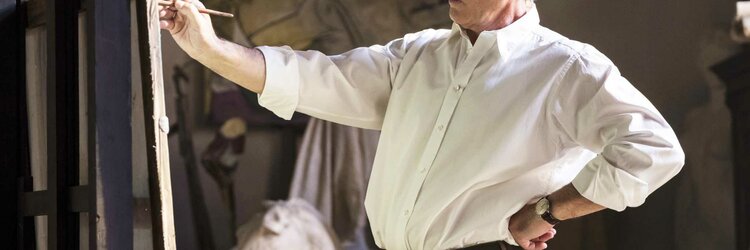
Categories
- Art (356)
- Other (3,632)
- Philosophy (2,814)
- Psychology (4,018)
- Society (1,010)
Recent Questions
- Why did everyone start to hate the Russians if the U.S. did the same thing in Afghanistan, Iraq?
- What needs to be corrected in the management of Russia first?
- Why did Blaise Pascal become a religious man at the end of his life?
- How do I know if a guy likes you?
- When they say "one generation", how many do they mean?
To answer this question, we must first define the very” maximum ” – and at this point we meet with insurmountable difficulties. The evaluation of any work of art is always subjective, there is no other way, this is what distinguishes art from exact sciences.
In the end, the opinions of “maximum” of the artist is the endless amount of, well, or at least three: the opinion of the artist (each master has a favorite and they often refer to it publicly or describe in his memoirs), the opinion of ordinary citizens (the picture after which the artist talking about, the one that caused a public outcry, etc.) and the opinion of professional critics (the work in which the style of the artist has become the most recognizable, the most complex composition, the most skillful technique, etc.)
Sometimes these opinions coincide and then we get a “generally accepted” interpretation, but more often all opinions exist in parallel and the same maximum is sought for each artist throughout his life, and often many centuries after his death.
In short, I do not see the point in trying to catalog art in this way – it does not give any new data, but rather opens up a field for discussion.
No wonder they say that there is no limit to perfection. You can learn all your life and it's true.
I can say from my own experience that when you start drawing, you have one goal, and after you have achieved it, for a while it seems that you have already reached your maximum, you will not be able to squeeze out any more and there is nowhere to go, but this is only until you decide on a new direction and set a new goal. And to achieve your ideal (it is important that your own, since everyone's ideals are individual) can be infinite: so many ways open up in the world of creativity that you can not count.
At a minimum, you can, for example, improve the quality of your genre or choose new ones that you like, pump up speed, take yourself on “weak” in various challenges, and much more.
There is no limit to perfection.
In creativity, there is no concept of maximum, there is the presence of talent or lack of it, the presence of your own style or lack of it. This well illustrates the work of one of the greatest and most recognized talents in the visual arts — Pablo Picasso. The first paintings of the Italian artist are significantly different from his extreme paintings, because over time, Pablo's vision of the world changed, his perception changed, and as a result, his paintings also changed.
I think that it would be appropriate to recall the popular expression “there is no limit to perfection”. You should always strive to surpass your previous successes and learn something new.
This is more of a utopia than a reality. After one goal is completed, another goal always appears. This is what happens to any master of his craft, the artist is no exception. At first, it may seem that mastering the composition, brushstroke techniques, and color combination is the limit, and then everything goes according to the thumb. In fact, painting does not stand still, there are always new techniques, materials and, of course, ideas from the artist himself. One theme can be brought to life dozens of times, and these will be completely different works ( Raphael painted Madonna about 20 times!) Many famous painters painted and developed until their death.
It is true to say that there is no limit to perfection, an artist is a person of creativity, and in creativity there is no end result and ideal. If you think more technically , then you should understand that nothing is perfect and everything can theoretically be improved in some aspect.
It seems to me that a person can always find something to learn,because it is not for nothing that there is such a proverb as “live forever-learn forever” because a person always strives forward and learns something new